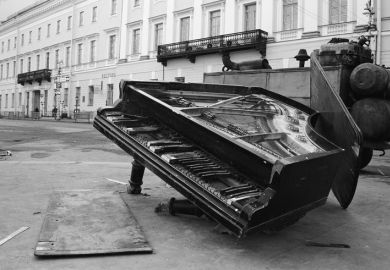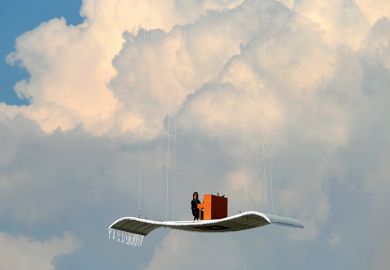Anyone interested in the development of arts education in England from the Second World War onwards will find this a fascinating and absorbing account written not only by a person who was there, but by the very man whose astounding vision, tenacity, guile and acumen made it all happen at an adventurous college in Devon.
Fortunately for us, Peter Cox is a great storyteller who has managed to transfer his idiosyncratic zest, humour and energy into this narrative, even though he has had to resort to being self-published. His infectious enthusiasm, love of detail and determination to win through is what made the development of arts education at Dartington a unique kind of educational Eden Project and a personal quest by the author. In retelling his story, he provides a microcosm of the travails of those brave souls who trod a similar path in higher education and the arts in the same era.
Indeed, his battles with the demons of increasing bureaucracy, financial nightmares and the continual challenge of finding the right staff for the right students give The Arts at Dartington 1940-1983 a very contemporary ring.
Cox gives us vivid glimpses behind the scenes and detailed descriptions of the many fascinating and seminal figures with whom he worked, some already legendary. In his first encounter with Clifford Ellis at Sydney Place in Bath, he discovered the founder of Bath Academy of Art busily cutting the lettering on Walter Sickert's gravestone. Clifford and his wife, Rosemary, were to become an important influence on Dartington's development, and the symbiotic relationship between the two postwar institutions is set out very clearly throughout the text. Although Bath Academy was state run and Dartington privately funded, for many years they pursued parallel paths.
This relationship was crowned by Cox's marriage to an ex-Bath student, Bobbie Sutton, whose grasp of educational principles and how they might be applied in the community had been formed at the academy. The heady mix of arts and educational philosophy that she absorbed, largely free of external restriction and inspired by direct contact with artists of the highest quality such as William Coldstream, William Scott and Kenneth Armitage, helped to influence and map out the path for the future development of the arts at Dartington.
As far back as 1925, the story of Dartington had begun when Leonard and Dorothy Elmhirst married and - thanks to inherited wealth - were able set up "an experiment in rural reconstruction" in South Devon. In 1941, Cox succeeded Christopher Martin as arts administrator of this new experiment in the troubled atmosphere of wartime England. Music was already well established through the arrival of Imogen Holst as the Council for the Encouragement of Music and the Arts's "music traveller" for the South West.
Martin had invited her to plan a special course for training music organisers and teachers for rural areas, and this had formed the bedrock of the arts department on which Cox was able to build. A chapter dedicated to "working with Imogen" shows what a profound influence this was, the resonances of which are still apparent in our society.
Music took root early on, and still flourishes there, but setting up projects in theatre, dance and visual art was more demanding. The book gives fascinating insights into experiments in theatre, involvement in exhibitions and educational film production and Dartington's frustrating and ultimately fruitless attempts to set up teacher training in music, blocked in every creative move by the dead hand of Whitehall. The founding of the summer school in 1952, however, brought new life and hope, and the author provides some delightful vignettes, recounted with his impish sense of humour, including an intriguing glimpse into the family life of the Stravinskys. The second half of the book reveals the philosophical foundation, logistics and the mechanisms that created Dartington College and are still felt today.
The account of the setting-up of artists in residence shows clearly the concern for and perceptive understanding of young people and their needs, which is also apparent in Cox's tales of the founding of the dance and drama department and an eventual move into academia. Working with Jack Dobbs, Cox was able to bring musicians from India, Indonesia and Japan to work at Dartington. In so doing, he profoundly influenced the direction of music and music education in this country in the closing decades of the 20th century.
Throughout the book, we are shown how Cox's vision of the function of art in its social context was brought to life and embedded in the hearts, minds and actions of countless students, teachers and all those fortunate enough to have come under his influence.
George Odam is head of research and staff development, Guildhall School of Music and Drama, London.
The Arts at Dartington 1940-1983
Author - Peter Cox
Publisher - Dartington Hall Trust Archive
Pages - 412
Price - £9.95
ISBN - 0 902386 22 0
Register to continue
Why register?
- Registration is free and only takes a moment
- Once registered, you can read 3 articles a month
- Sign up for our newsletter
Subscribe
Or subscribe for unlimited access to:
- Unlimited access to news, views, insights & reviews
- Digital editions
- Digital access to THE’s university and college rankings analysis
Already registered or a current subscriber? Login



